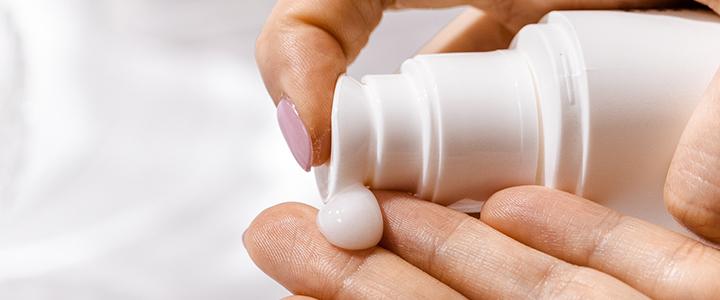
June 2021: Sunscreen IQ: Protecting Your Skin and the Environment
On these recent, blistering hot, sunny days, it’s important to remember to protect yourself from exposure to ultraviolet light to reduce risk of skin cancer as well as other skin damage. We have learned a lot over the years about the dangers of excessive sun exposure, and most people liberally apply sunscreen lotions and sprays to provide that protection. But more recently, we are starting to learn that there are little-known chemicals, called UV filters, in some sunscreens that can affect marine and freshwater fish and other organisms. After use, UV filters are washed off from skin and clothes and enter water bodies either directly through swimming or from wastewater effluent after showering. While much more research needs to be done to study the impacts of the various chemicals flagged as problematic – a National Academy of Science panel began a review in February 2021 at the request of EPA – there are things we can all do right now to reduce the release of these chemicals into the environment.
The effects of sunscreen chemicals on the environment first came to light nationally in 2018 when Hawaii became the first state in the nation to ban the sale of over-the-counter sunscreen products containing oxybenzone and octinoxate. The goal of the new Hawaii law is to preserve the island’s marine ecosystems, especially the coral reefs, which are in danger of bleaching, deformations and die-off from these chemicals.
We may not have coral reefs in New Hampshire, but according to the National Ocean Service, there is other marine life that can be affected by these chemicals. Some of the known effects include impairing growth, deforming young or decreasing fertility in fish, sea urchins, dolphins, mussels and green algae. There have also been studies showing freshwater fish with detectable amounts of certain UV filters. Sunscreen agents that are dispersed in bodies of water decrease the penetration of UV light, which in turn affects aquatic organisms that depend on light for metabolic and reproductive functions.1
The U.S. Food and Drug Administration noted in 2019 that, of the 16 marketed active ingredients at the time, two ingredients – zinc oxide and titanium dioxide – are generally recognized as safe and effective for use in sunscreens; two ingredients – PABA and trolamine salicylate – are not; and there were 12 ingredients for which there were insufficient safety data to make a positive determination.2 The FDA has been asking industry and other interested parties for additional data since then.
The first and best way to reduce the release of these chemicals into the environment is to seek out sunscreen products that don’t include them. There are resources you can use to do a little bit of research before buying, to check out the ingredients and reviews of the SPF and UVA protection. The Environmental Working Group (EWG) and Consumer Reports are good online resources.
You can also make a difference by reducing the amount of sunscreen you need to use; it is still extremely important to protect yourself from the sun, but there are other ways you can do it rather than applying more and more sunscreen. For example:
- Shield your skin using clothing, hats and visors, and rash guard swimwear.
- Go outdoors in early morning or late afternoon when the sun is lower in the sky; try to avoid being directly in the sun between the hours of 10 AM and 2 PM.
- Make a beeline for a shady area or make some shade with an umbrella or canopy.
- Check the UV index, which provides important information to help you plan your outdoor activities in ways that prevent sun overexposure.
Using sunscreen as protection from ultraviolet light remains an important step in battling skin cancer and skin damage, but incorporating a few more sun avoidance habits when enjoying the outdoors and checking the ingredient list when choosing sunscreens can go a long way in making sure we also protect the environment.




